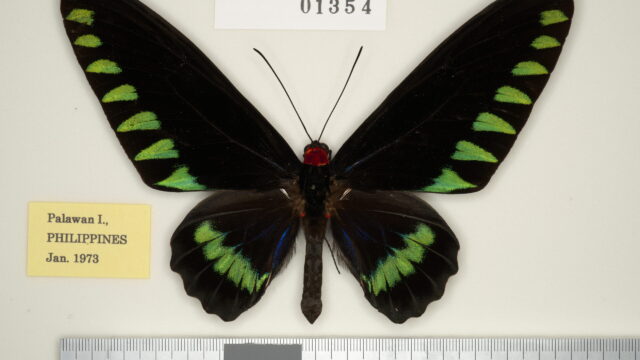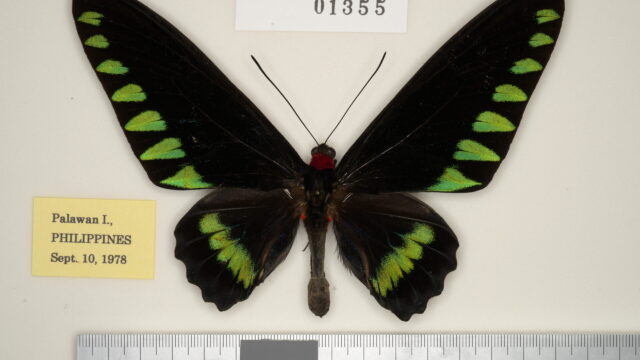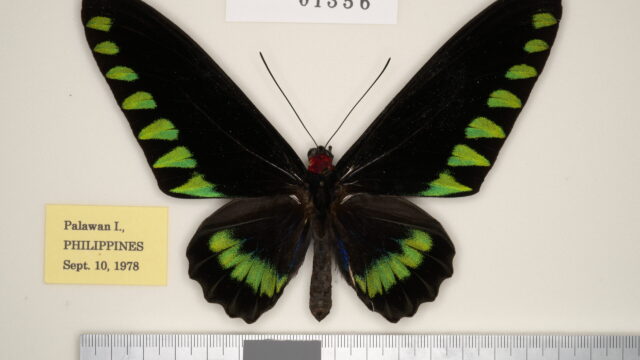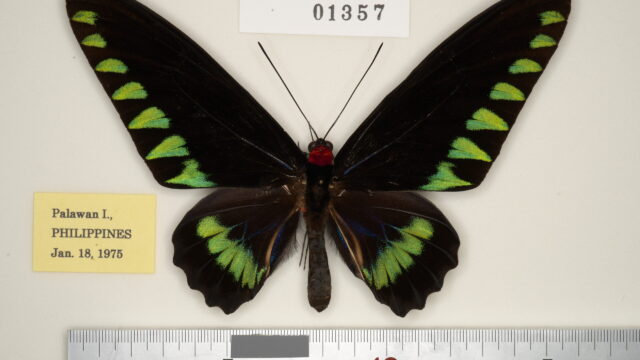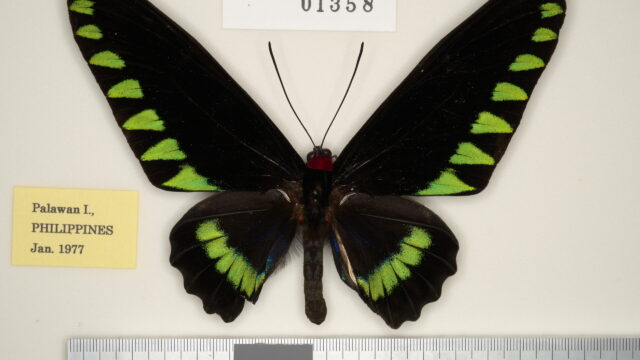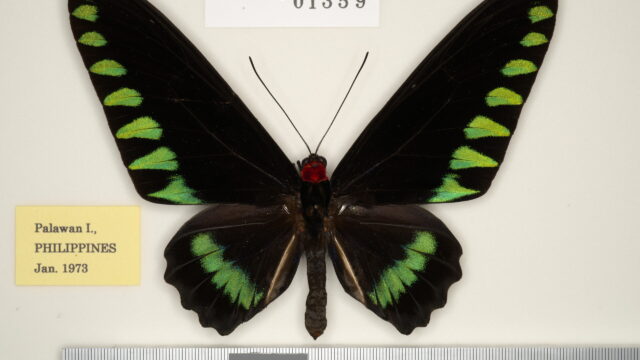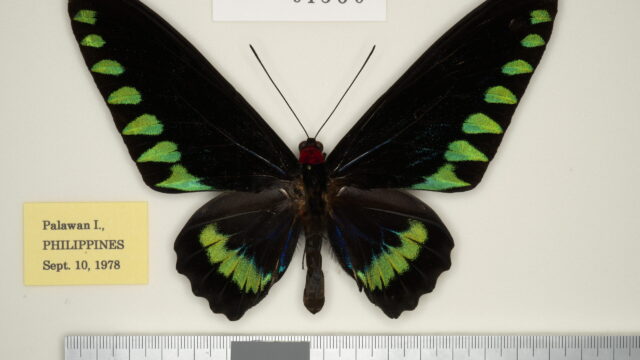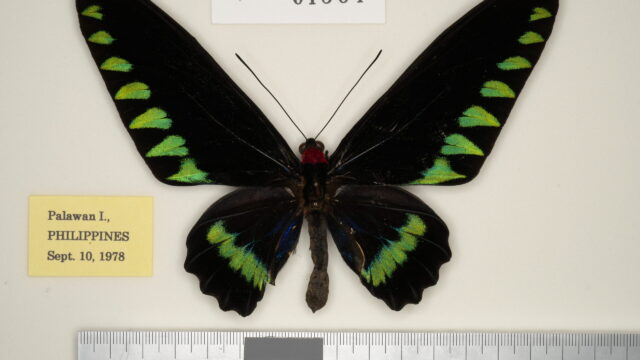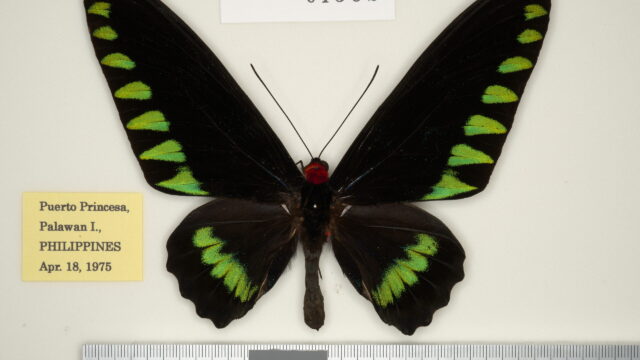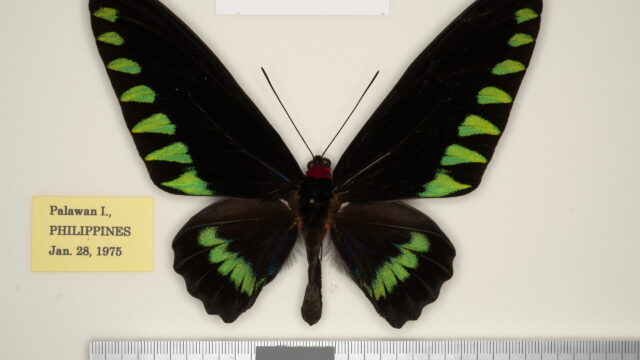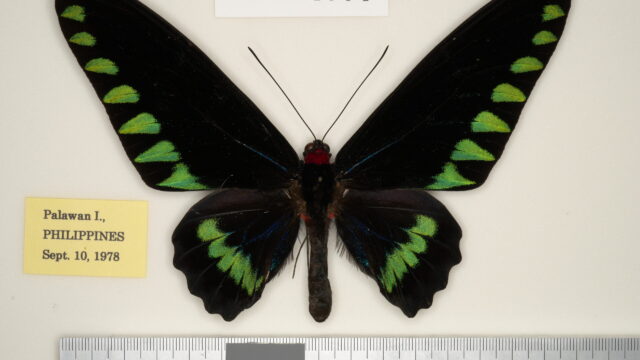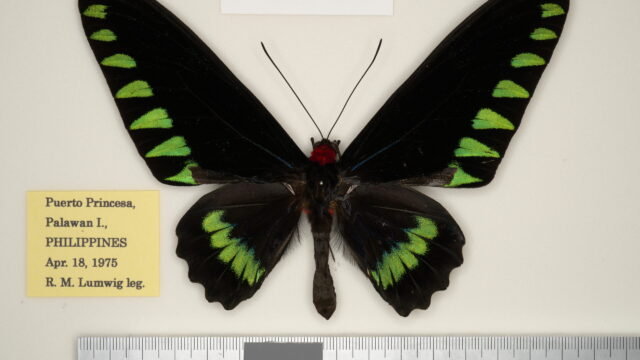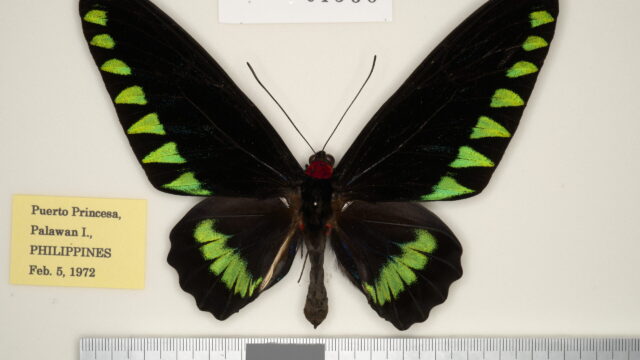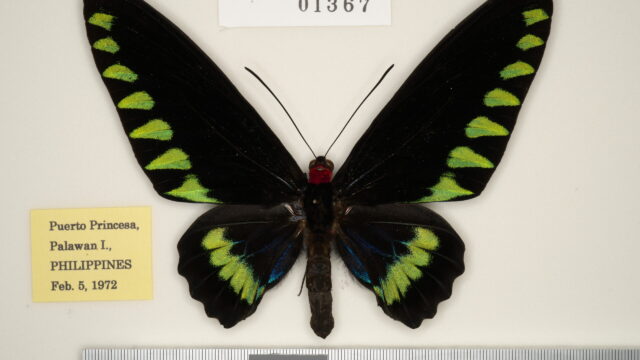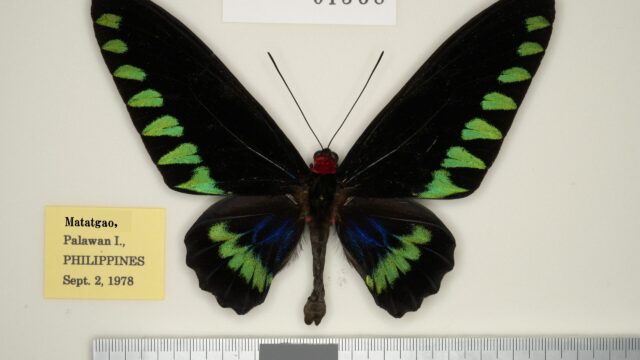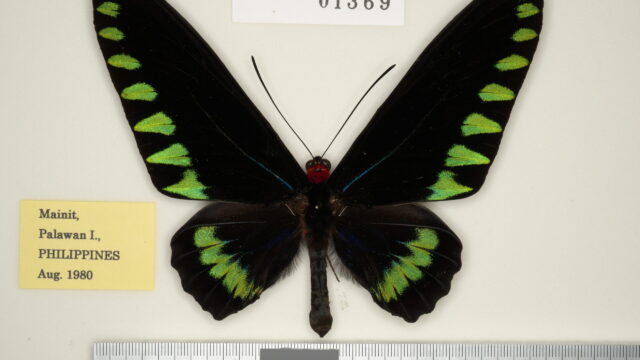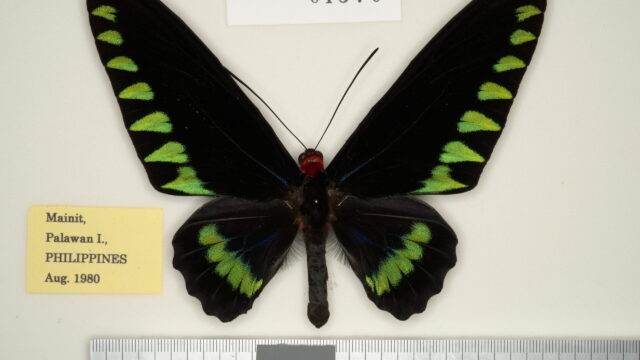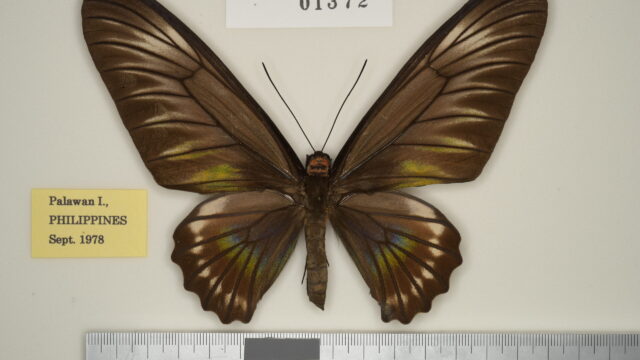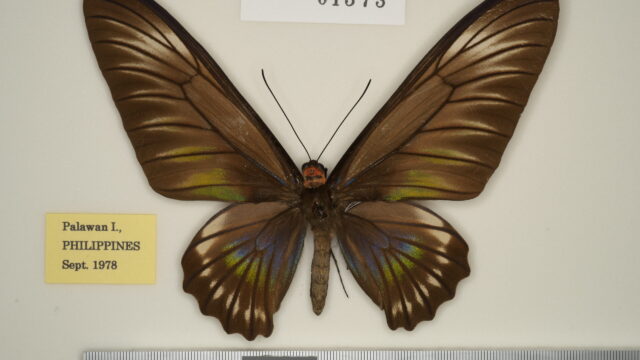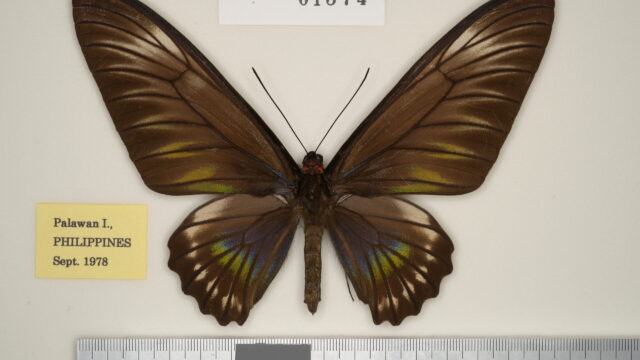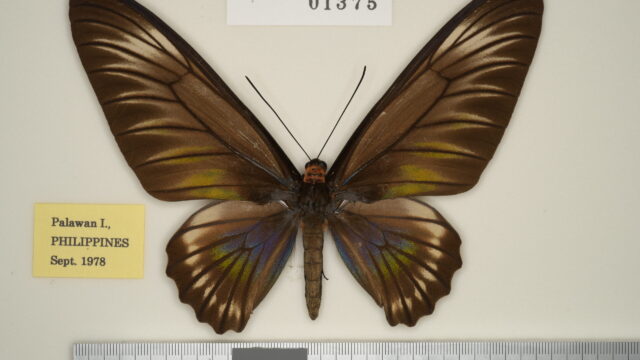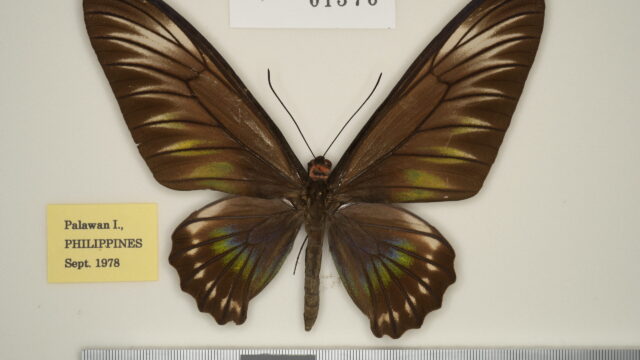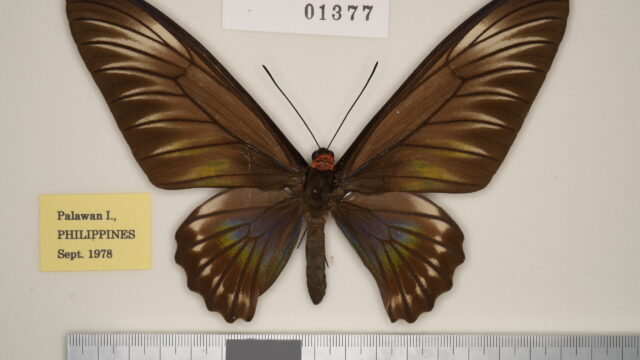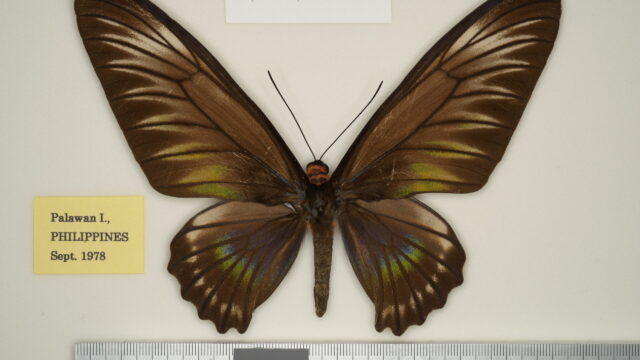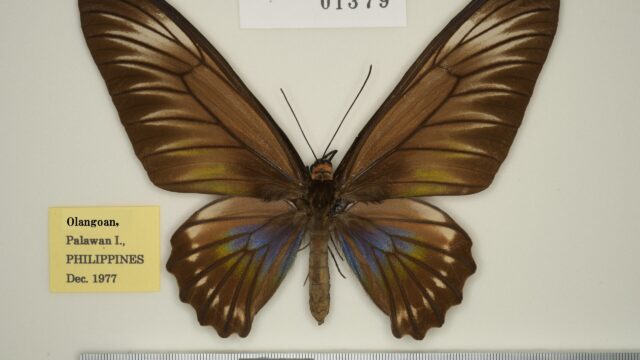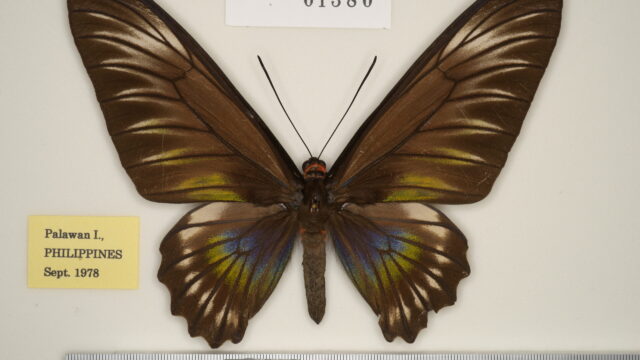2) Sp. trojana (Staudinger, 1889)3) [♂] [♀: trojanus, (Rothschild, 1895)2)]
= trojanus, (Rothschild, 1895)2) [♂, ♀] (Palawan Is.)
It is a large species, endemic in Palawan Is. (Philippines), and there are no other subspecies. The spotted pattern is very stable, with little known variation. This species was once considered a subspecies of Trog. brookiana when it was first discovered, but is now classified as a separate species based on morphology and genitalia. It was found not to be as rare as previously thought.
(Distribution) [DCD 17], [Map 70]
PHILIPPINES: Palawan Is. (Roxas, Cleopatra Needle, Cabayugan, Olangoan, Tarabanan, Mt. Beaufort, Puerto Princesa, Irahuan (=Irawan), Balsahen River basin, Thumb Peak, Mt. Stavely, Iwahig River basin, Salakot Fall, Matatgao (=Maglasgao) River basin, Mainit, Bataraza).
(Vertical distribution) 0 – 600 m. a. s. l.
(Episodes of discovery and original description)
This species was described as a new species by Staudinger in 1889 on the basis of 5♂♂ specimens provided by Dr. Platen. In his original description, he wrote that he was very sorry that there were no specimens of ♀, but he pointed out that there was little variation as far as ♂ was concerned. He also considered the ♂ specimen to be a regional variation of brookiana, but based on the difference in size and the color and shape of the spots, he placed it as an independent species. He concluded his paper by hypothesizing that this species may have differentiated from brookiana and then become a species, but he also stated that it may be a local form from Palawan Island.
In the same year (1889), Honrath presented this species to the members of the Entomological Society of Berlin at a meeting held on March 18. At that meeting, he concluded that the difference between brookiana and this species was so striking that it should be placed as an independent species, and that it belonged to the Pompeus group. The species name trojana means “ of the Troy (people )”.
(Spotted pattern)
♂:Wing color glossy black. FW pattern resembles those of Trog. brookiana, but the green wedge-shaped patches are shorter and more rounded at the tips, and all are separated from each other, with seven parallel to the outer margin (=termen) (in the previous species, parallel to the anterior margin (=costa)). The color of these patches is not golden yellowish green, but golden bluish green. HW is unique in that they have a golden bluish green band parallel to the outer margin in a position that is contiguous with the green wedge-shaped patches on FW, and its basal area is covered with iridescent blue. The underside resembles Trog. brookiana, white spots are much smaller.
♀: Wing ground color pale brown. The wing patterns resemble Trog. brookiana, but the green wedge-shaped patches are pale yellowish green in V1b – V3rd, and gradually become white toward the apex. On HW, golden blue patch spreading from base of wing, following by golden green band that spread lightly toward the outer margin. A band formed by whitish sagittal-shaped spots are distinctly present on submarginal area. On underside, there are broader white patches than on the surface on both FW and HW, and on FW cobalt-blue linear streaks are present along the anterior margin of the radius and along the cubitus in space 1b. Hair tufts on neck are faded yellowish red.
(Larval foodplant)
Aristolochia sp. C (from Palawan I.), A. jackii 1)
